A misunderstood edible plant, black nightshade berries and greens aren't poisonous as many will claim. The common yard weed most know from its small green berries is a popular, heavily documented edible plant consumed around the world from South America to China. Today we'll look at the edible plants of the Solanum nigrum complex and how to separate them from dangerous look alikes. We'll end with some notes on cooking, and explore how black nightshade greens and berries are eaten and enjoyed around the world.
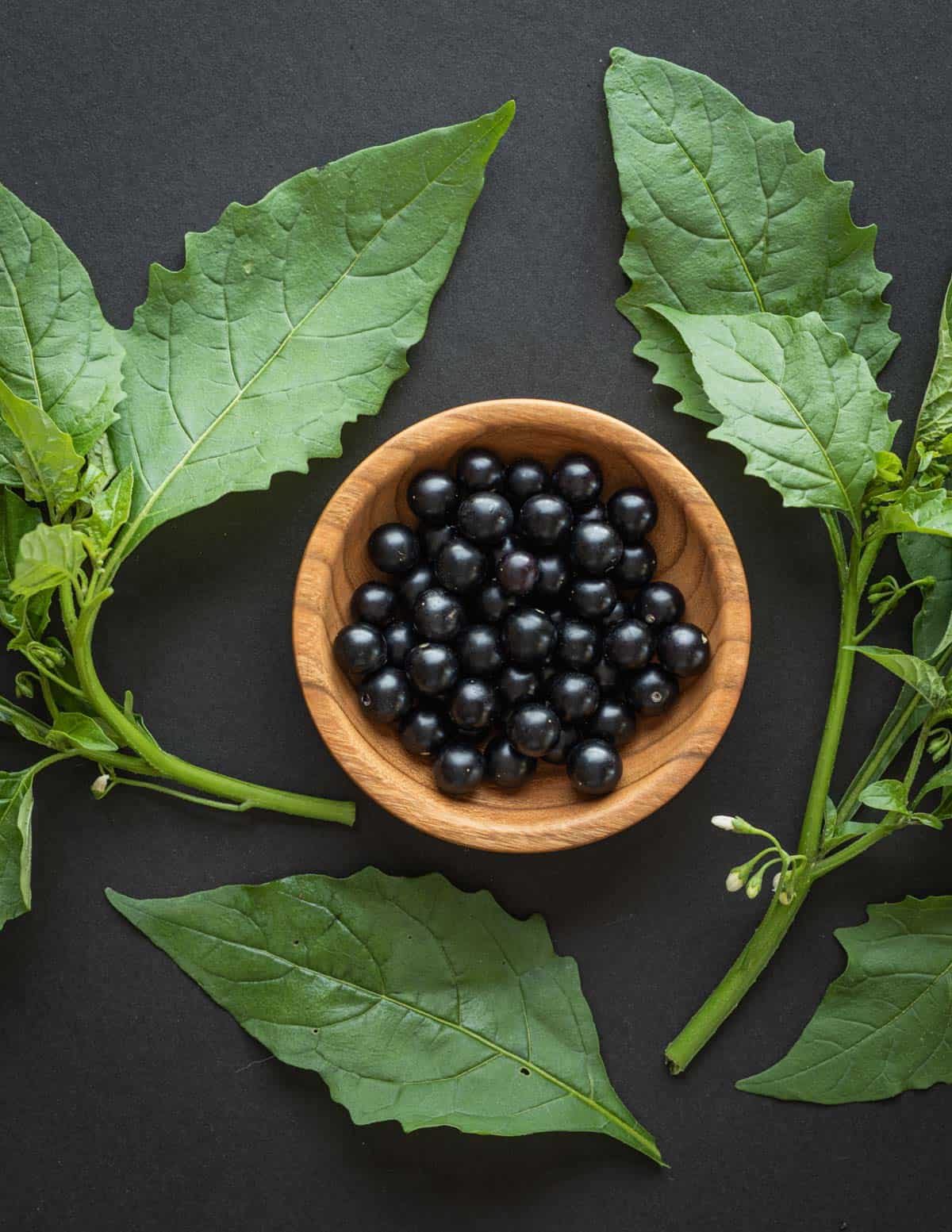
What is Black Nightshade?
These weedy fruiting shrub plants are relatives of tomatoes and eggplant in the nightshade family (Solanaceae). Originally, all black nightshade plants were known as European black nightshade (Solanum nigrum).
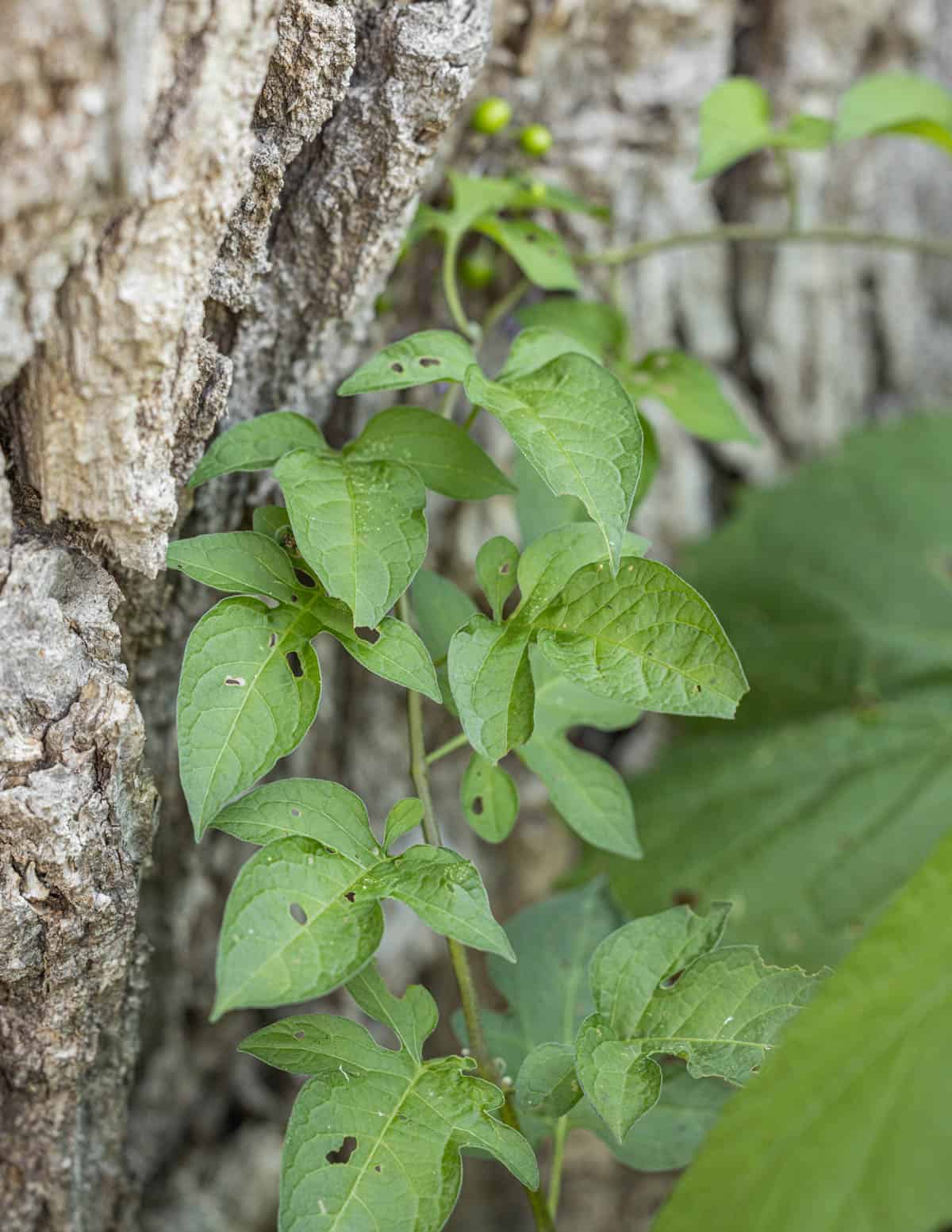
As Linnean categorization has progressed, just as with mushrooms we now know there's over two dozen individual species of black nightshade plants, at least four of which are found in North America according to Sam Thayer. All of those plants are part of what's called the Solanum nigrum complex: a group of many closely related plants.
In Western North America there's S. americanum. S. ptychanthum is found in the east, S. douglasii in the Southwest, and S. interius in the Great Plains. Other varieties could be native to Europe. No matter what variety you find, all plants in the species complex are edible.
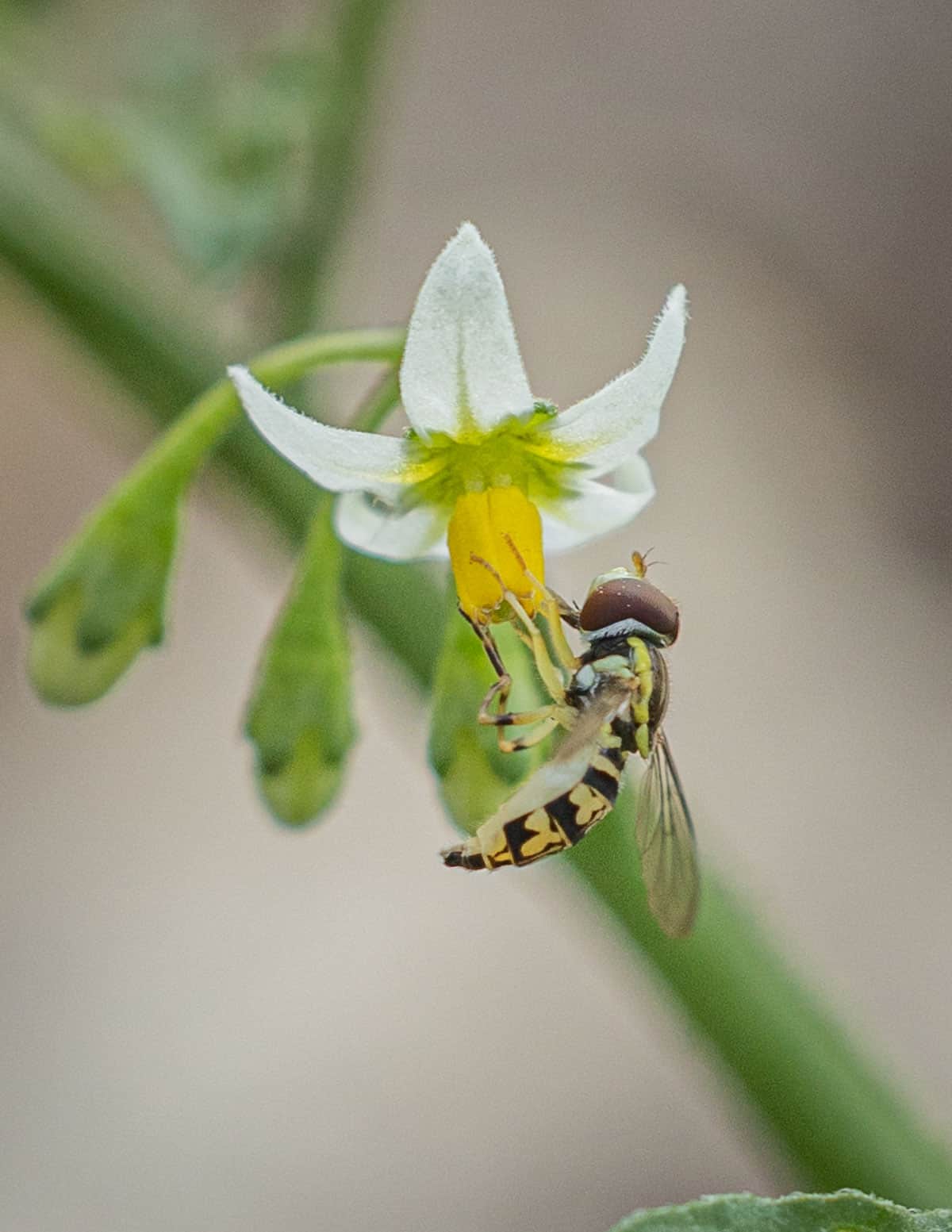
Confusingly, African black nightshade has been grown in American and European gardener under the name garden huckleberry for over 100 years. Solanum melanocerasum and Solanum retroflexum are two common varieties of seeds that are sold.
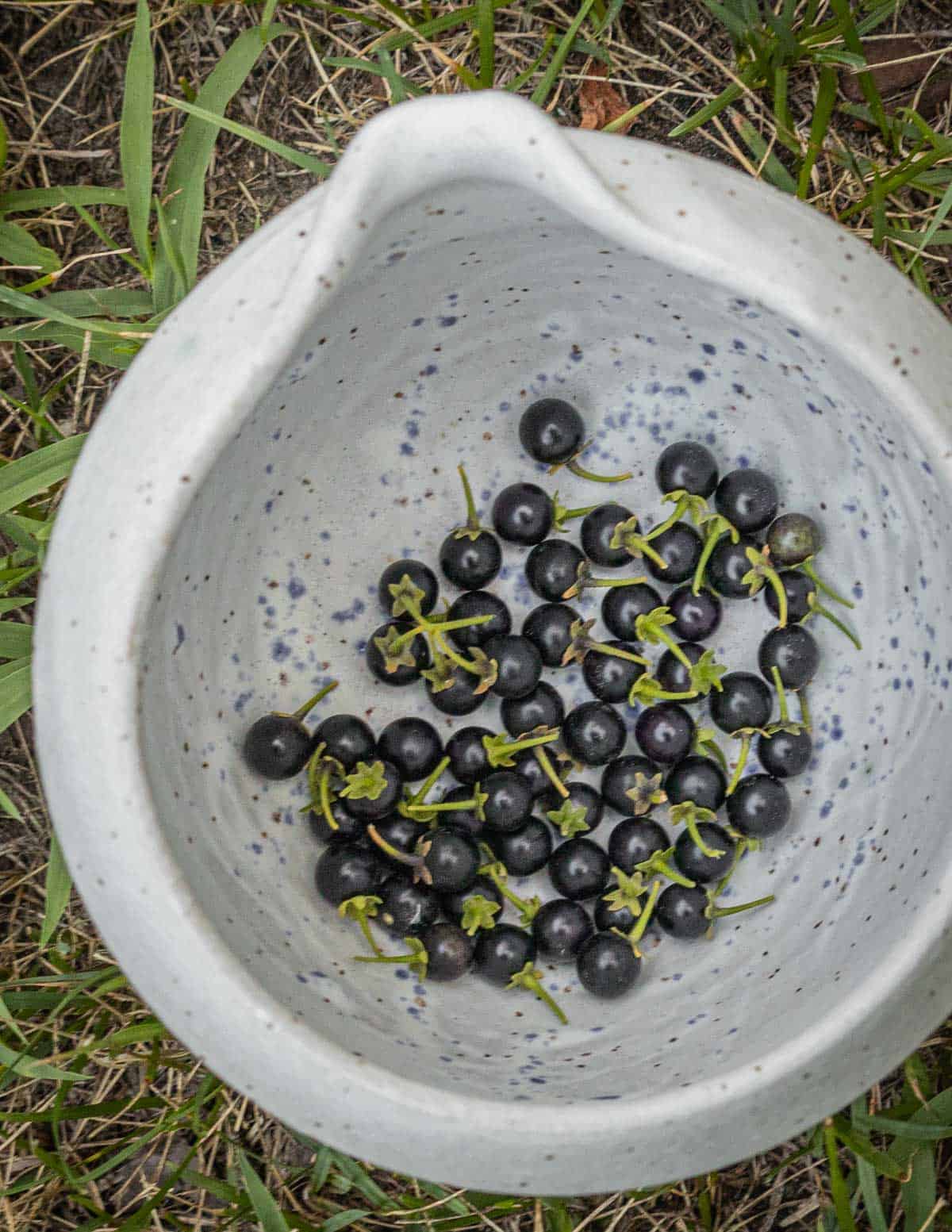
I can only assume the name Garden Huckleberry is used to avoid the stigma around poisonous nightshades for marketing purposes. The plants have be sold under many names including: wonderberry, moralle, morella, sunberry, petty morel, blackberry nightshade, houndsberry and solanberry, to name a few.
Black Nightshade Identification
Black nightshade plants are a short lived perennial or annual, common in disturbed areas, parking lots, yards, gardens, and the edges of wooded areas. It's typically a low-growing plant, but in full sun it can resemble a small shrub up to a meter tall.
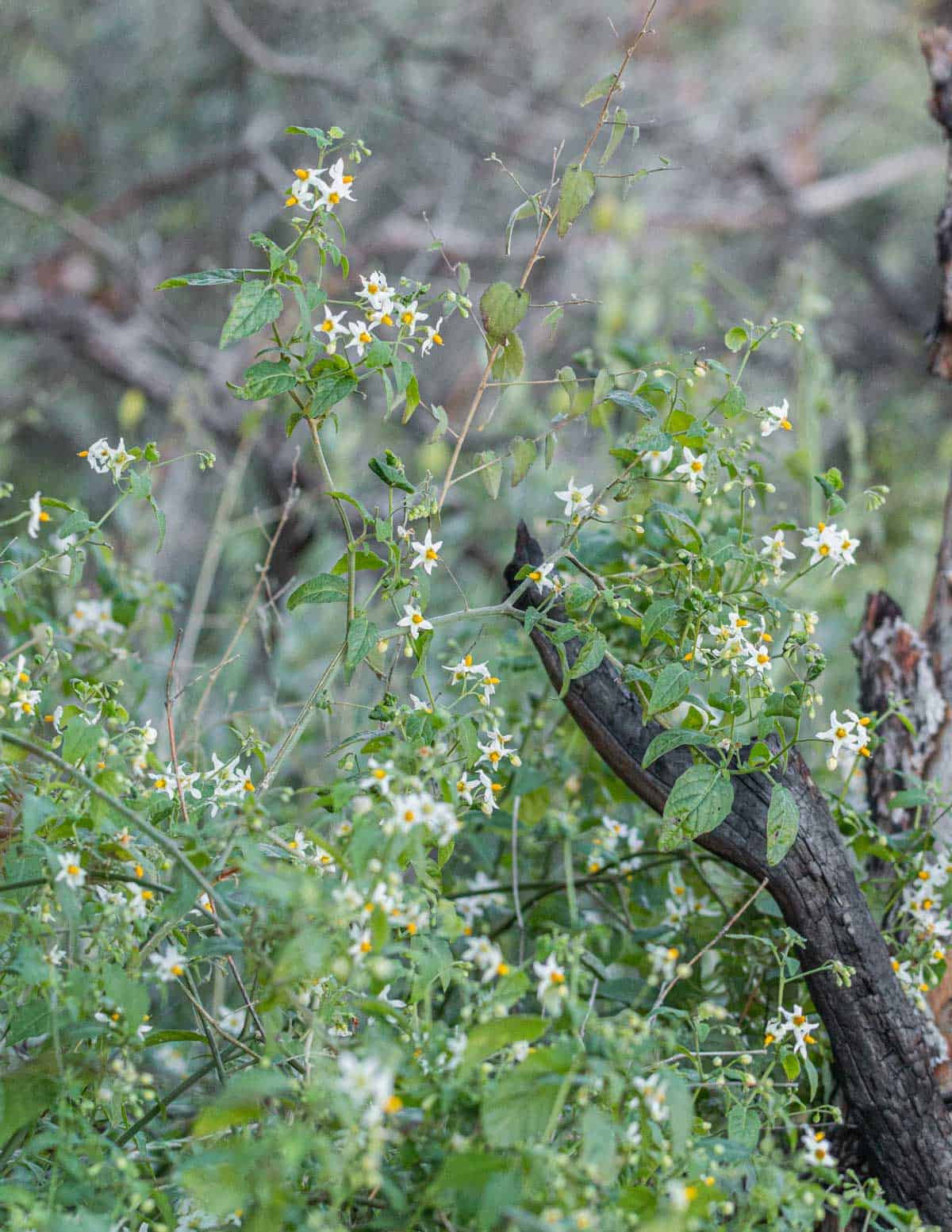
They're mildly invasive, but not difficult to control. You can remove black nightshade plants by yanking up the roots like other common weeds-there's no need to use RoundUp or herbicides.
The leaves are alternate, roughly oval-shaped, and often speckled with holes from bugs and insects.
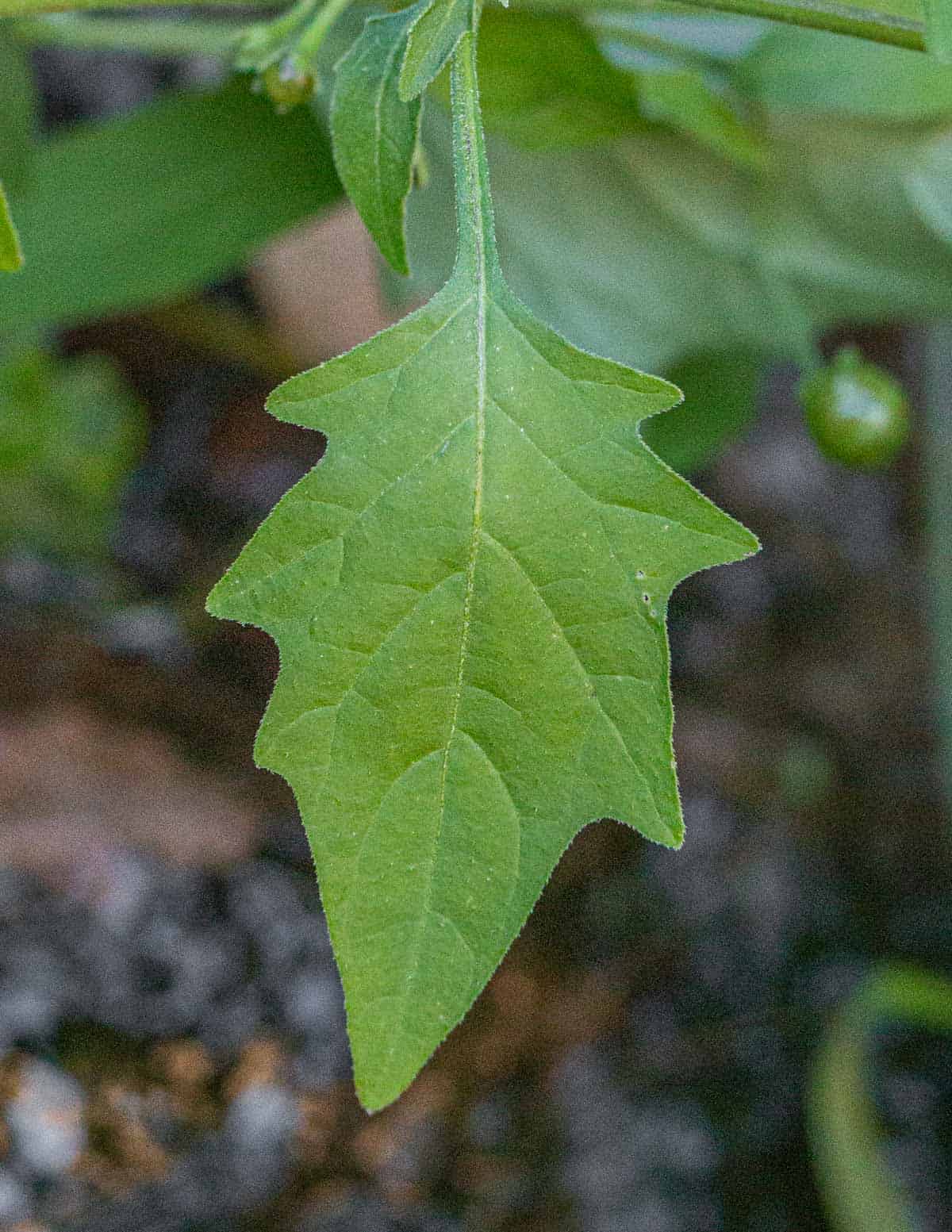
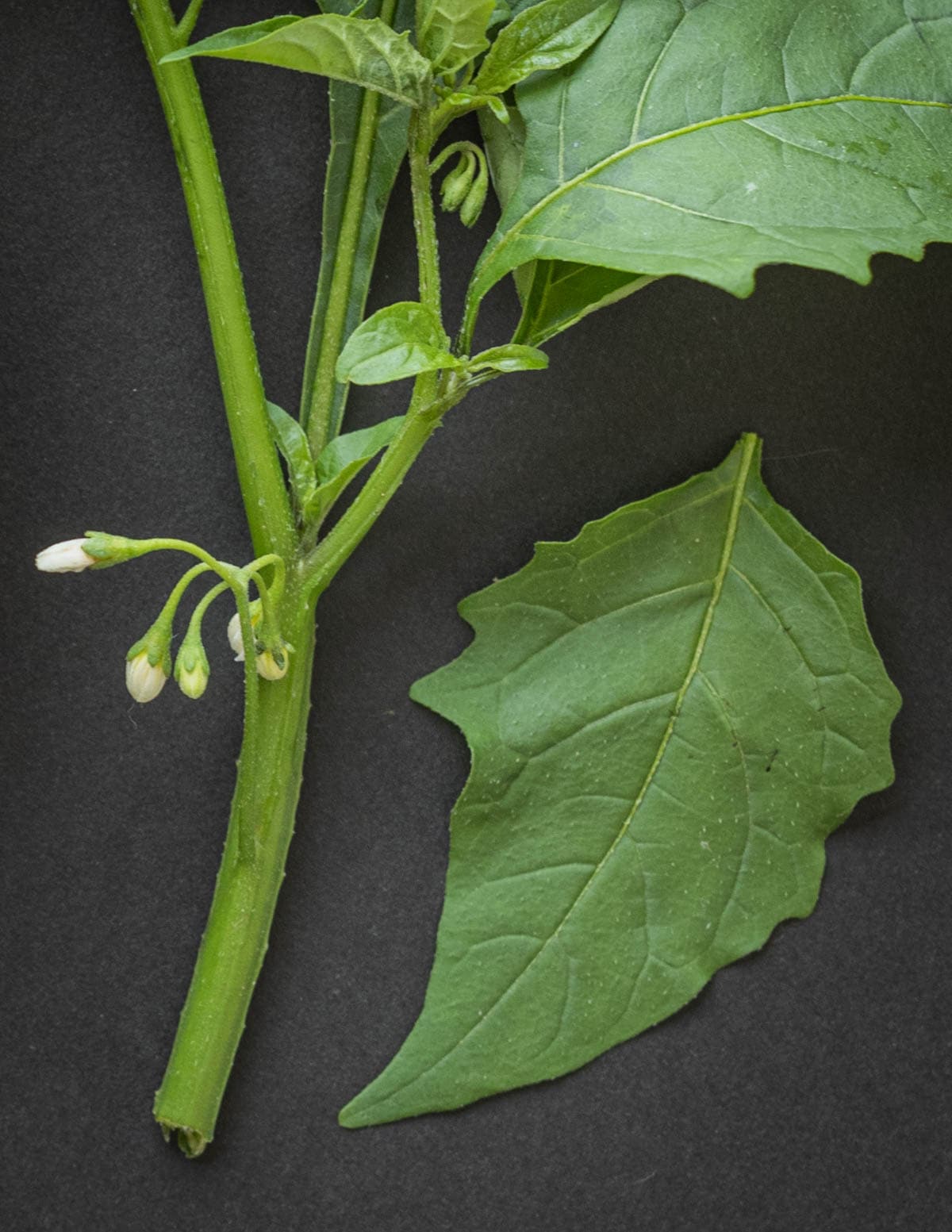
The fruit appears first as small clusters of unripe green berries that turn purple-black at maturity.
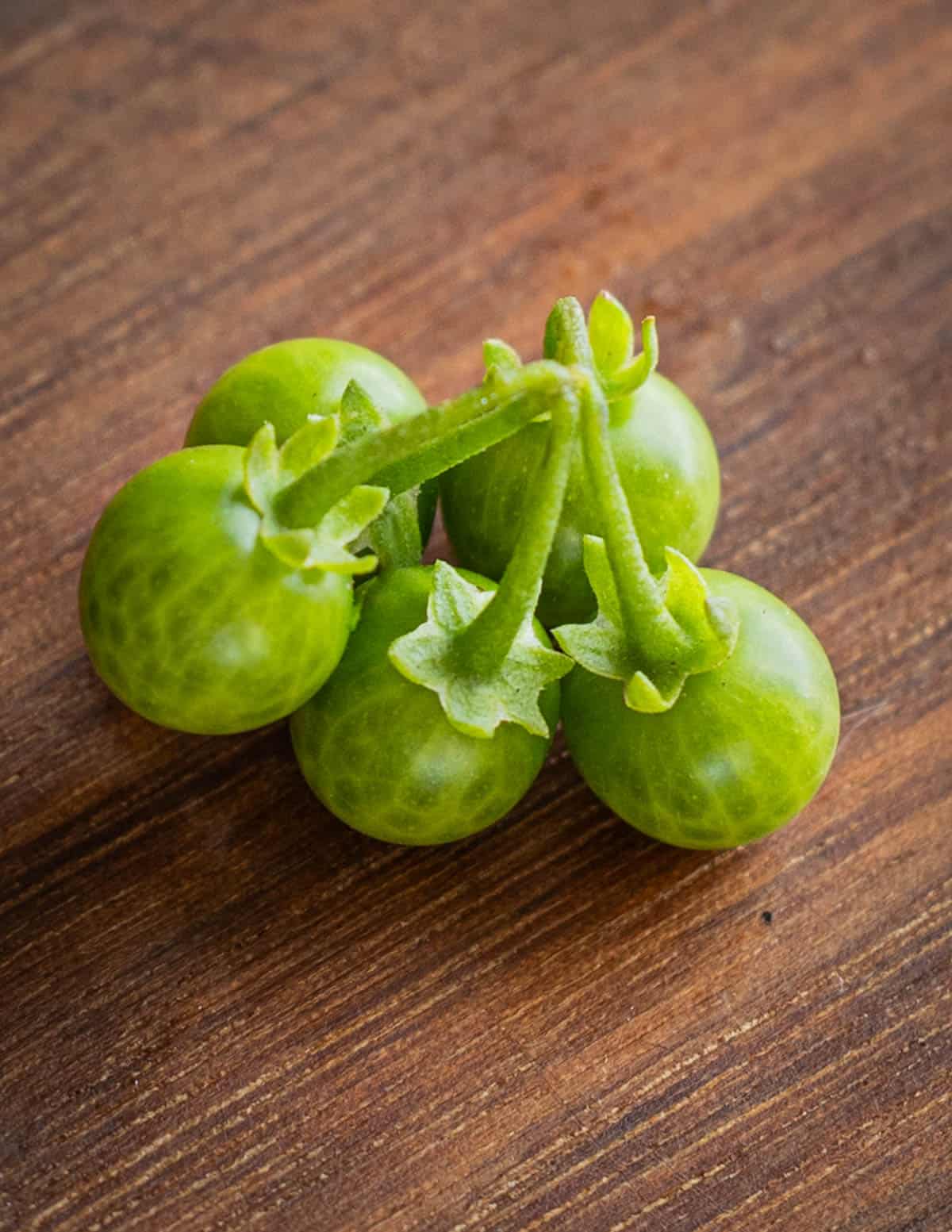
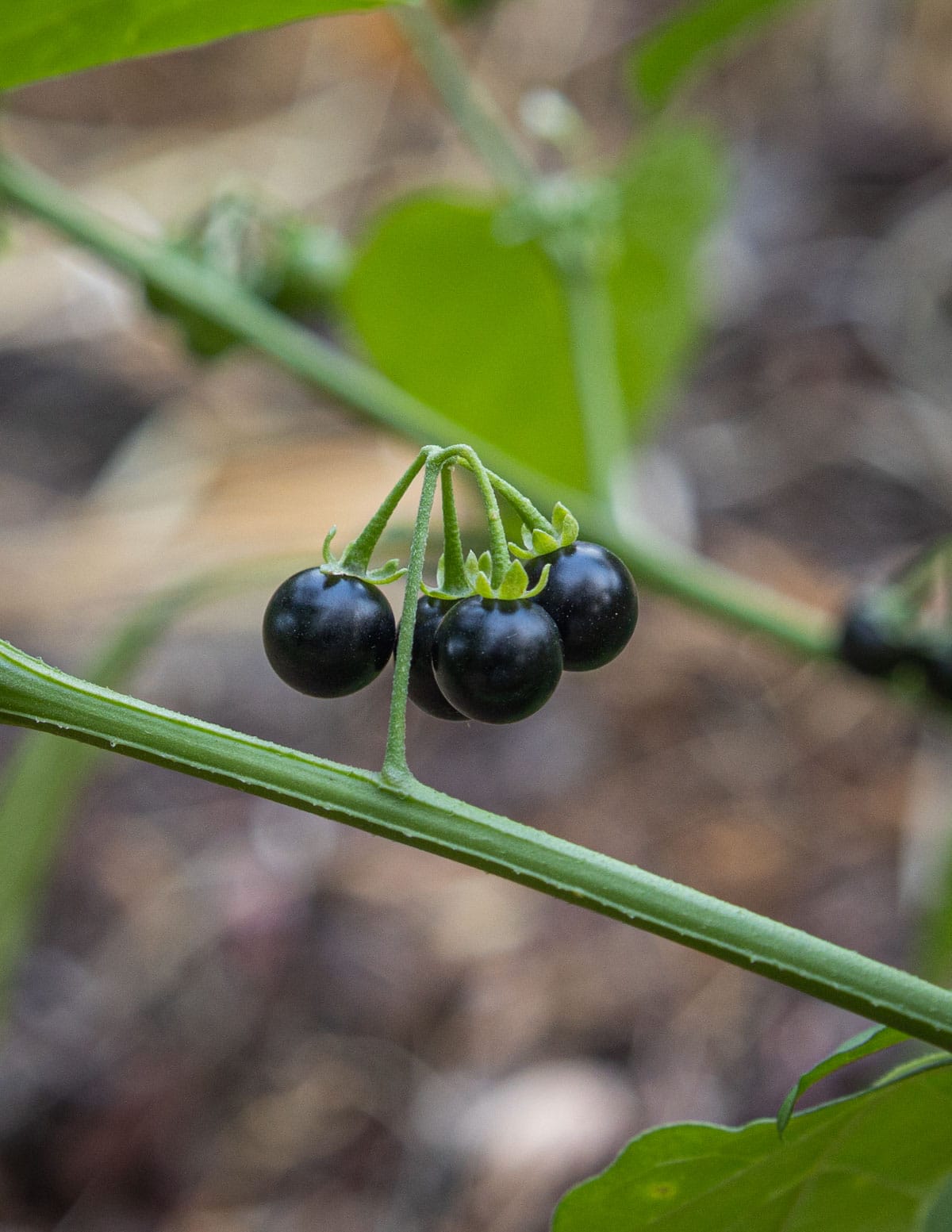
White star-shaped flowers appear in the summer and are one of the easiest ways to tell the plant apart from related Solanaceous plants.
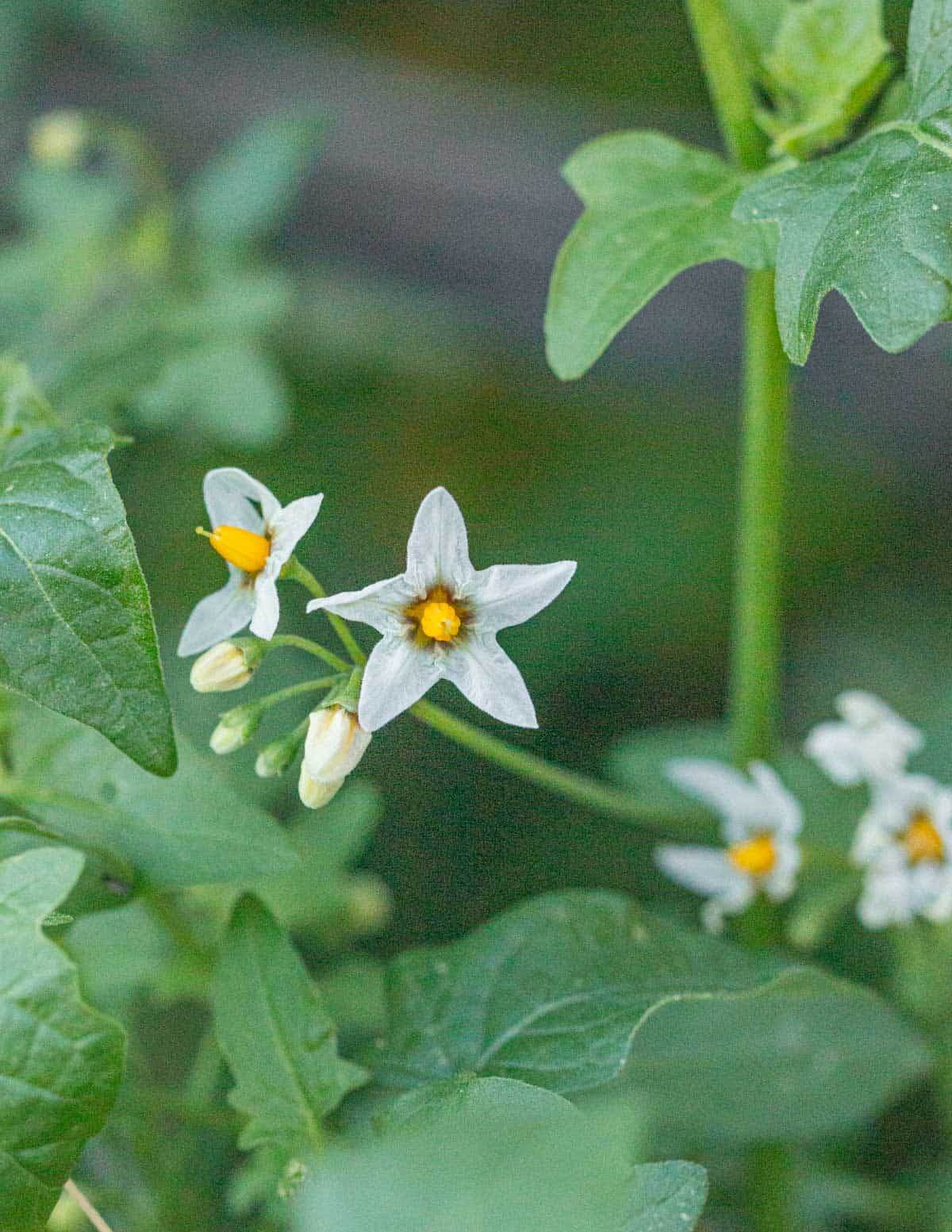
Look alikes
There's a few important black nightshade look alikes to know that should not be eaten. Thankfully they're easy to tell apart by comparing differences in the leaves, flowers, and fruit.
Deadly Nightshade (Atropa belladonna)
Deadly nightshade is the plant responsible for the poor reputation and confusion of black nightshade as a poisonous plant, partly because both plants unfortunately share the same common name of black nightshade. Belladonna has a long and colorful history in Europe associated with witchcraft and death, and the juice is said to have been used as a poison by the Romans.
While that might sound scary, anyone can easily separate deadly nightshade and edible nightshade by looking at the following characteristics:
- A. belladonna has singular fruit larger than black nightshade plants.
- A. belladonna has a noticeably larger calyx that extends beyond the circumference of the fruit.
- A. belladonna flowers are brownish to purple. Black night shade flowers are white.
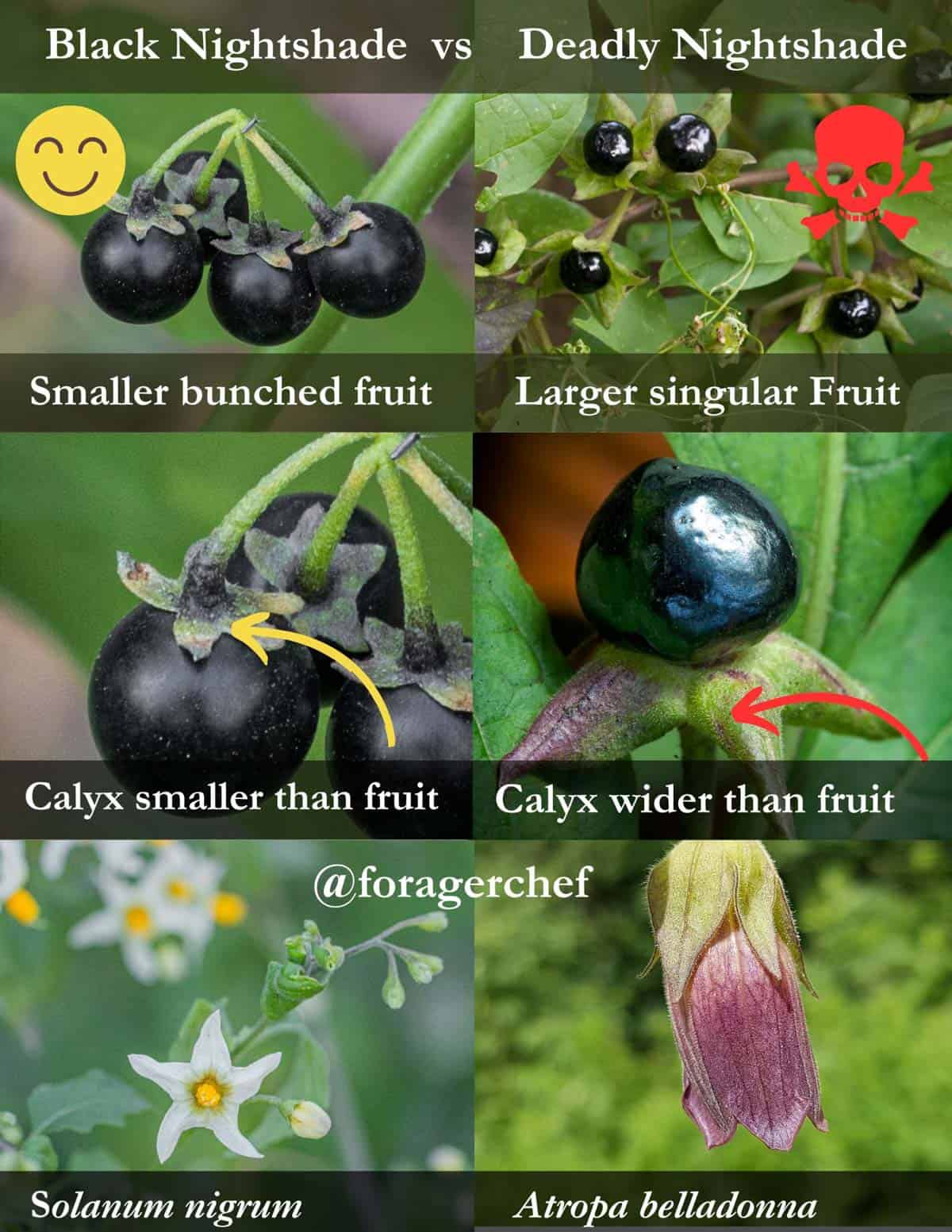
Common Nightshade (Solanum dulcamara)
Also known as bittersweet nightshade or climbing nightshade. A semi-woody vine, Solanum dulcamara is the most common black nightshade look alike most people will know. It's easy to separate edible black nightshade plants from bittersweet nightshade by the following characteristics:
- S. dulcamara has purple flowers vs the white flowers of S. nigrum plants.
- The fruit of S. dulcamara appear green first, turning orange and eventually red at maturity.
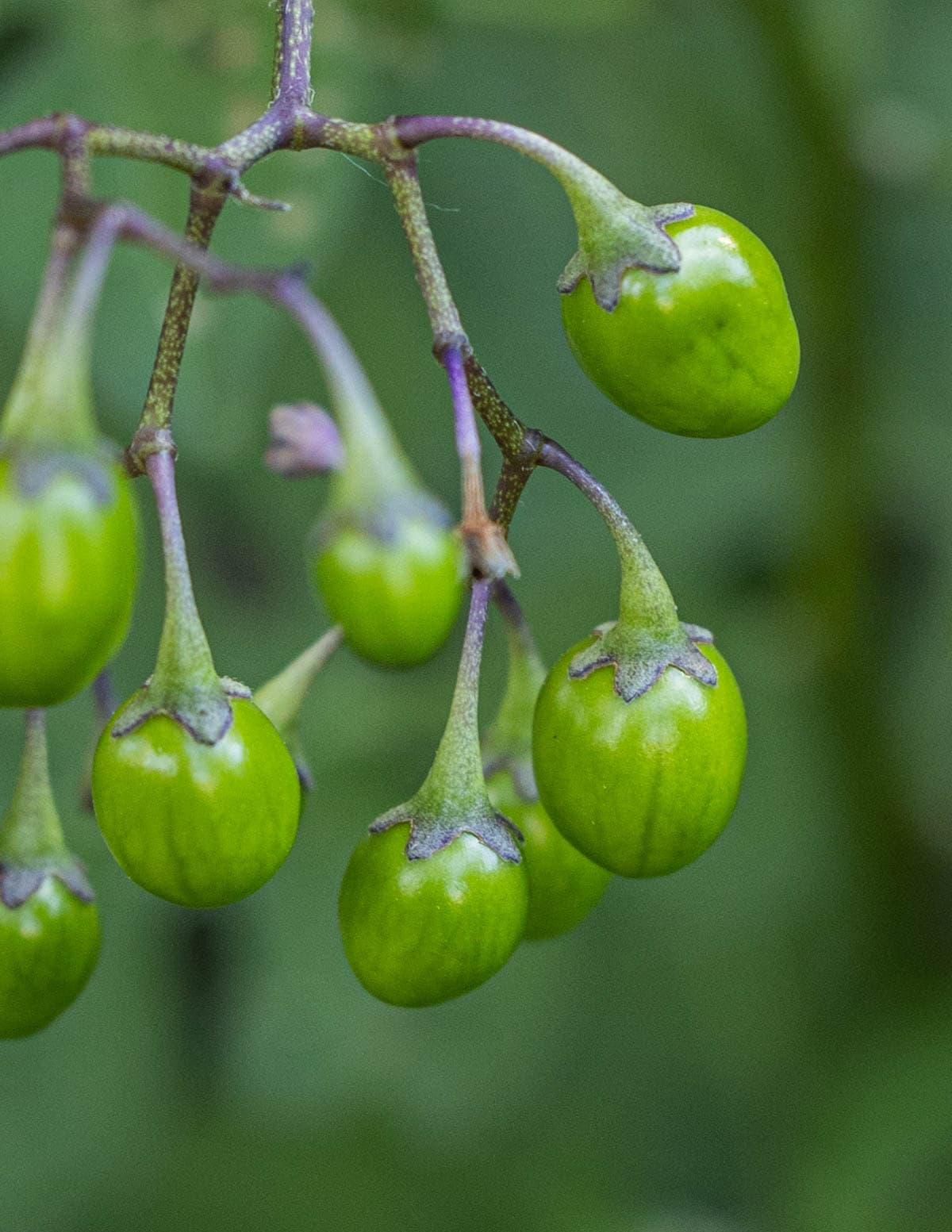
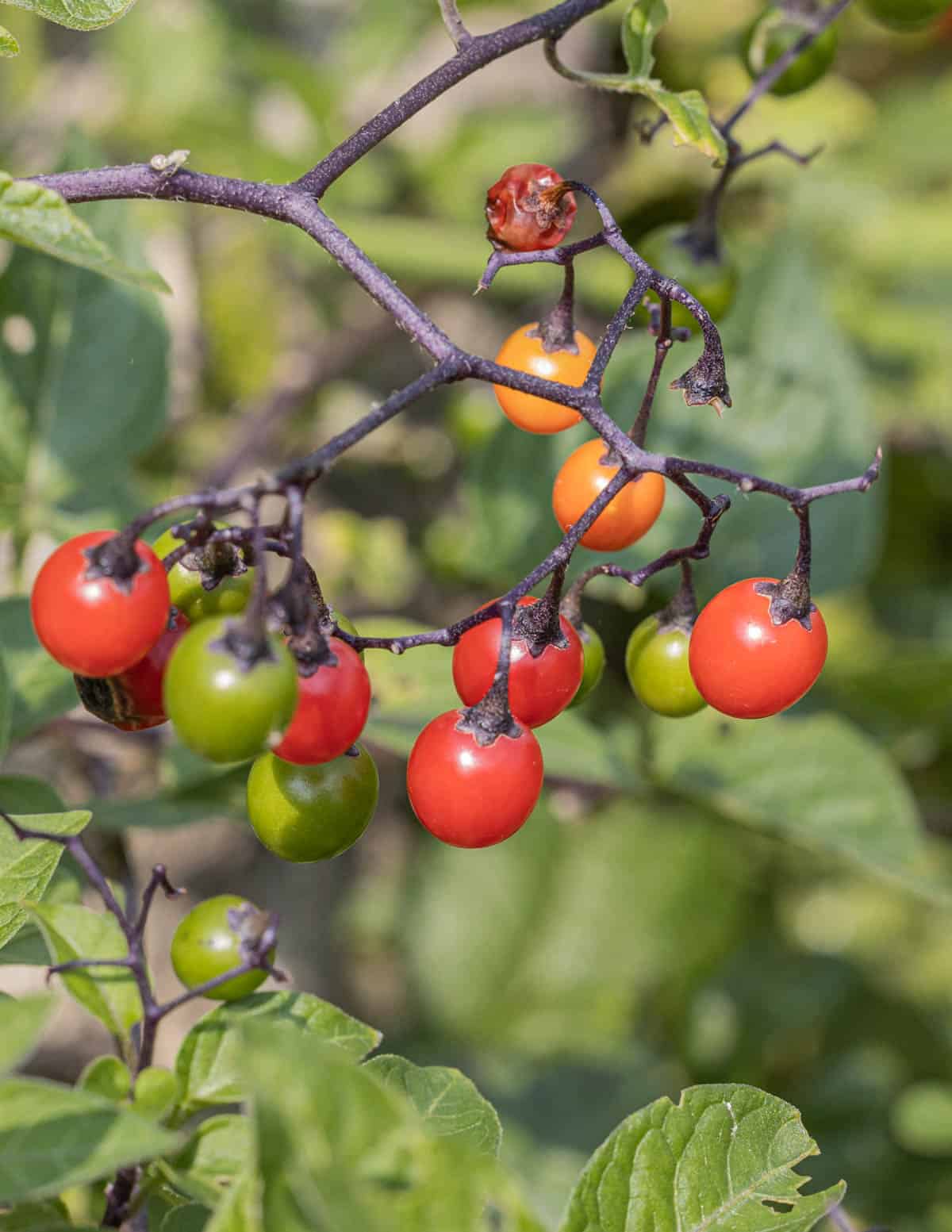
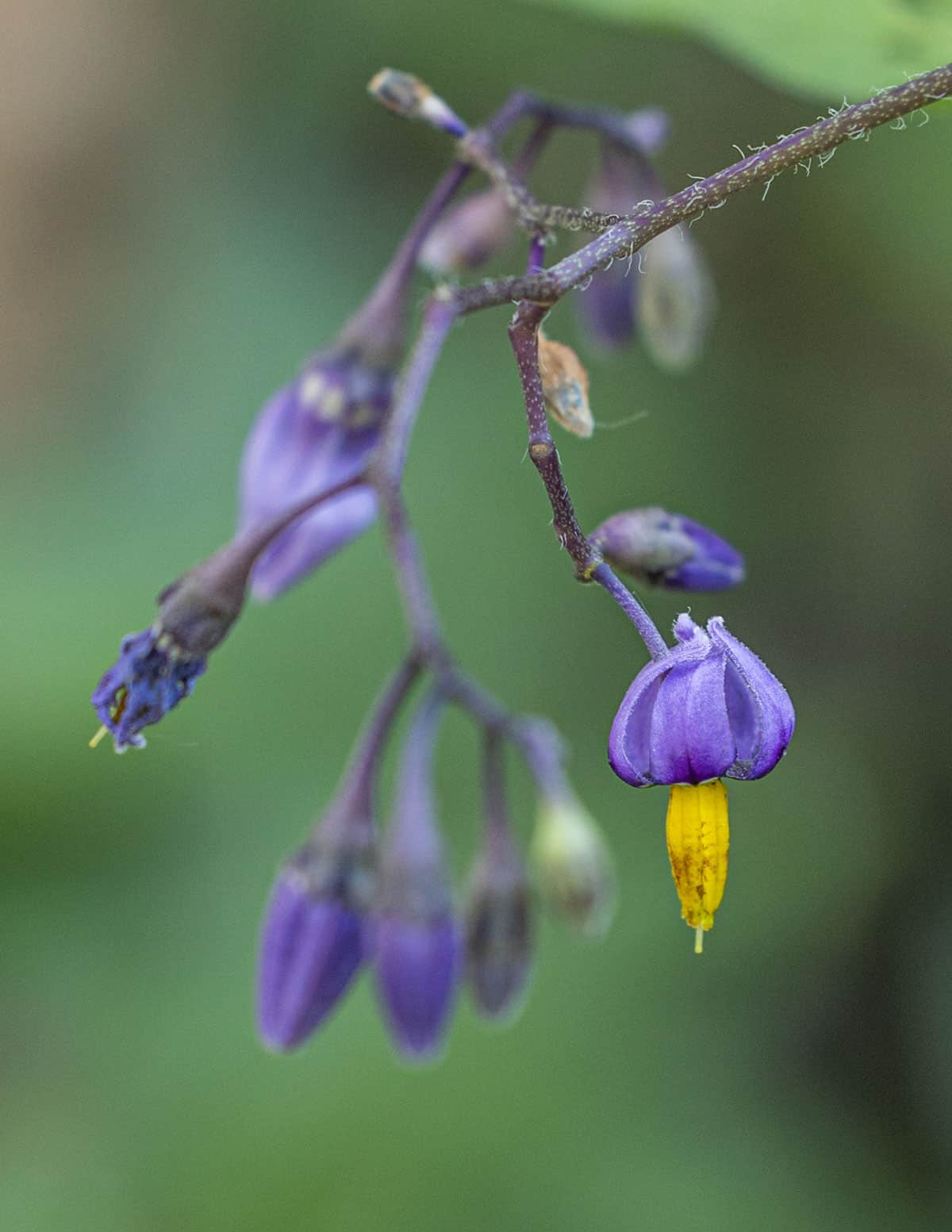
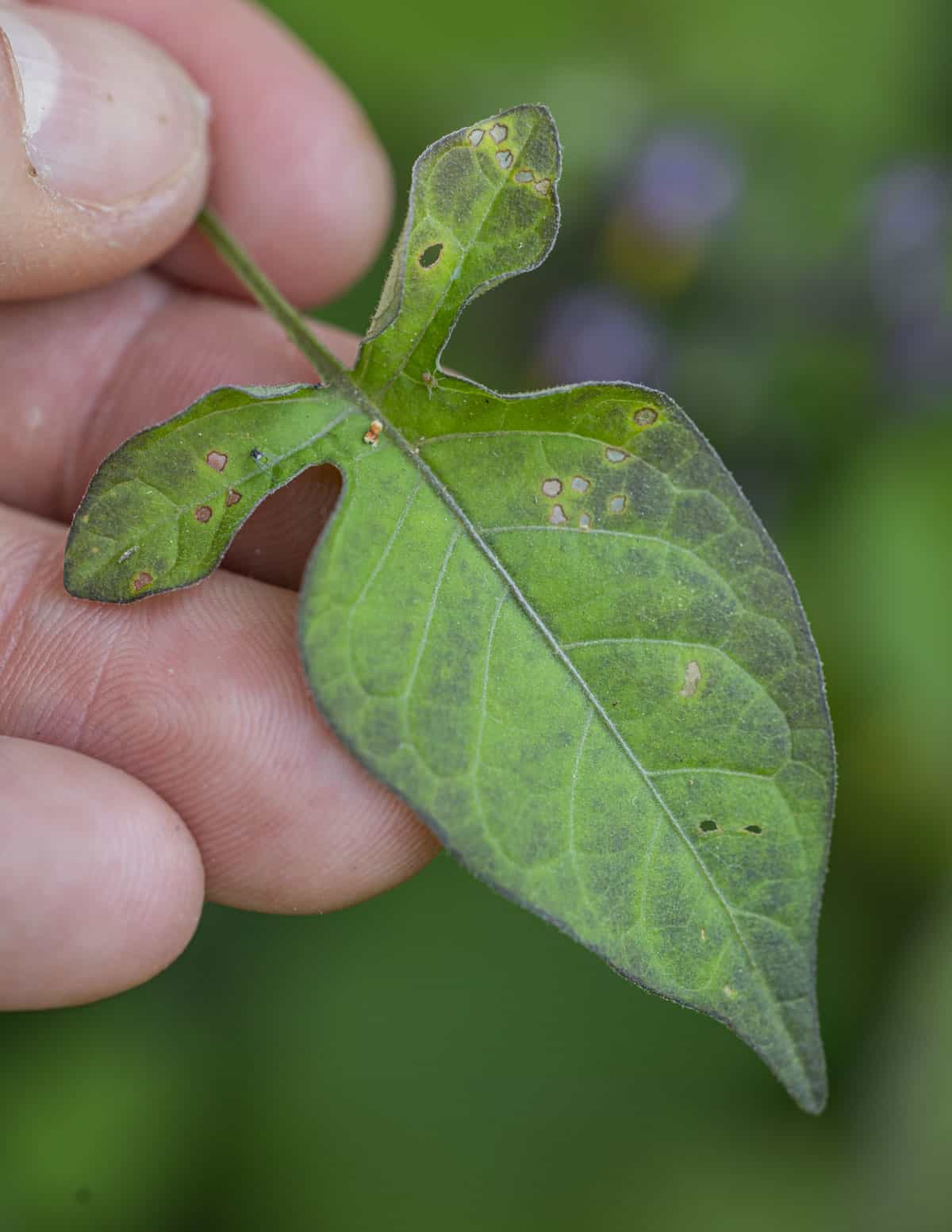
Unlike A. belladonna, bittersweet nightshade is unlikely to kill you, but it won't taste very good. The plant is considered inedible, and the leaves and unripe fruit are poisonous. There's reports of people eating ripe fruit without ill effects but it's hardly worth experimenting.

Is Black Night Shade Poisonous?
Essentially all nightshade plants we eat contain varying amounts of alkaloids like atropine, scopolamine, hyoscyamine and solanine that are all dangerous in high doses.
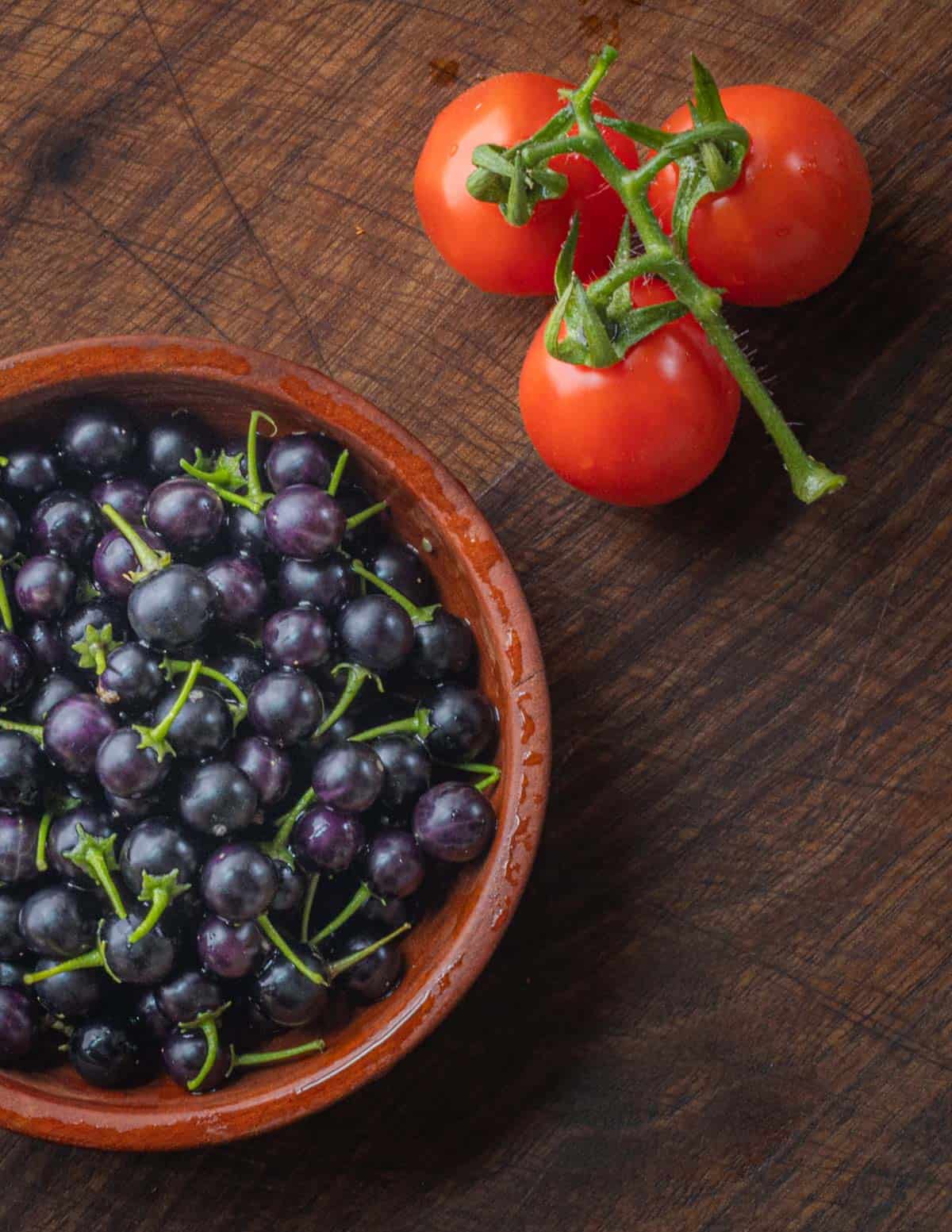
Well-documented edible nightshade vegetables like tomatoes, potatoes, eggplant and black nightshade don't have dangerous amounts of the compounds, although the leaves of some (potatoes, eggplant) are definitely toxic.
Compounds like solanine are also well known to be higher in unripe fruit, which is why you shouldn't eat green potatoes or unripe, green nightshade berries.
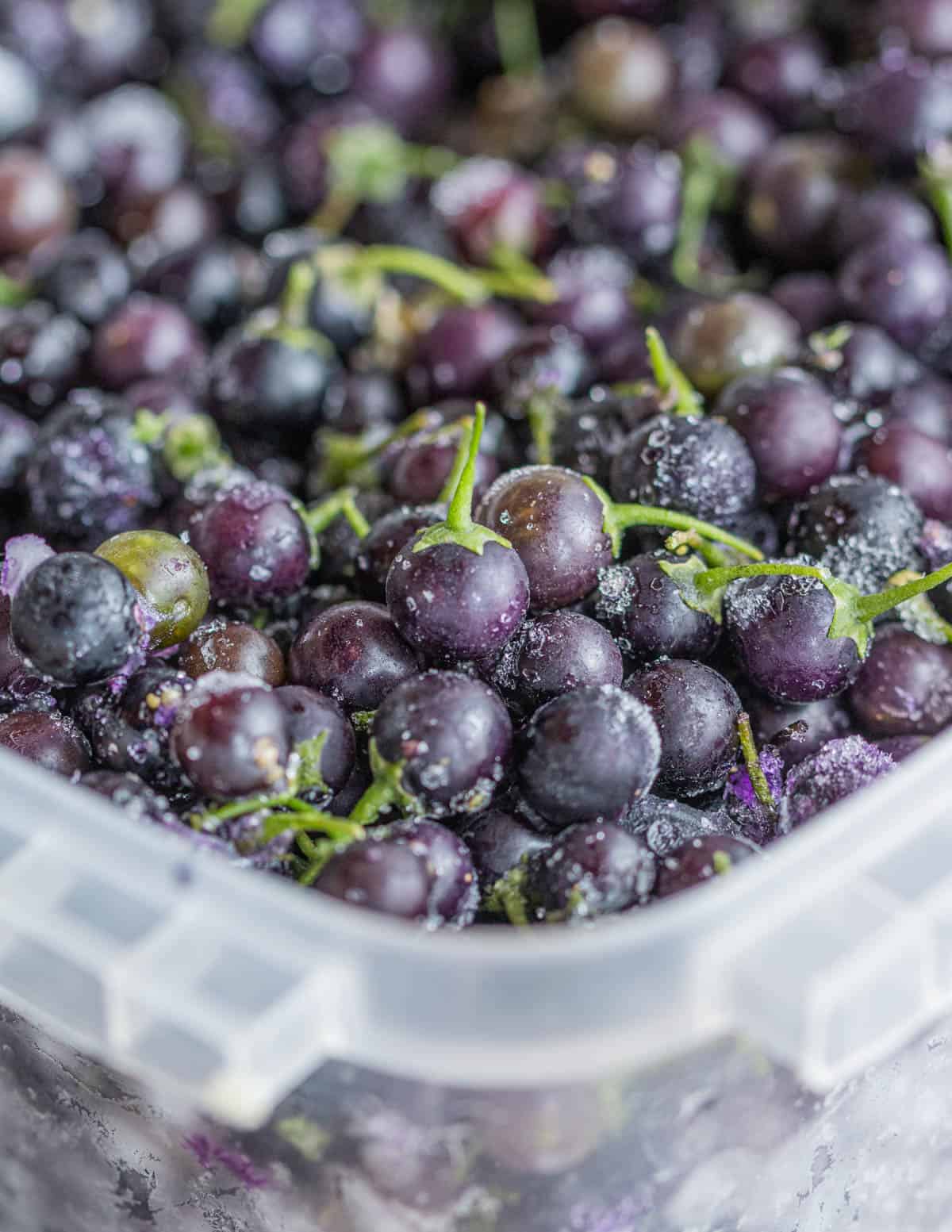
There's a lot of misinformation and hearsay regarding this plant. Unfortunately, many websites and resources still repeat old, outdated information.
NC State Extention (and many other University websites) still claim S. americanum can be deadly poisonous. Others conflate individual sensitivity with toxicity, claiming things like Hmong people are immune to the toxins while Caucasians are not. Yet another article describes deadly nightshade using images of edible black nightshade plants.
Sam Thayer's article on black nightshade is the best resource available on this topic and more eloquent than I could ever be. I also love this quote from his Field Guide:
"This plant is the subject of the most pervasive myth of toxicity of any in North America. Both ignorance and racism have fed that myth. Doctors are not botanists--I have examined several documented poisonings from "Solanum nigrum" that were clearly and unambiguously misidentified Atropa belladonna."
Here's the key points to know on edibility and toxicity of black nightshade plants:
- Always eat a small amount of new plants at first to test for allergies and sensitivities. 1-2 oz of cooked greens is plenty your first time.
- The tender leaves and young shoots can be cooked anytime the plant is meristematic before flowers appear. Older leaves harvested after flowering are more bitter and mildly toxic.
- Bitter alkaloids in the greens are water soluble and can be reduced through boiling.
- The berries should be harvested when ripe and completely black.
- Ripe black night shade berries are edible raw.
- Unripe, green black nightshade berries won't kill you, but you might get an upset stomach from eating too many.

Black Nightshade Uses Around the World
Millions of people around the world grow black nightshade as a food. Young, tender nightshade leaves are typically boiled or steamed and eaten as a cooked green or in soup. The greens have a mild bitterness and a pleasant flavor reminiscent of bell peppers and green beans. They taste much milder than tomato leaves, which are also edible.

The small black berries taste like tomatoes mixed with blueberries or huckleberries. They can be used in recipes as a substitute for blueberries or made into jams, jellies, pies and juice. The many small seeds and sweet taste of the preserves reminds me of figs.

The sheer volume of ethnobotanical evidence that black nightshade is an edible, traditional food is irrefutable and among the most widely documented of any wild edible plant I've researched. Here's some examples I've gathered.
- Hmong: Hmong farmers at the St. Paul Farmers Market in Minnesota sell the greens known as Zaub iab ("Bitter vegetable") in bunches during the summer. They're commonly used in Stir-fries and soups.
- South America: Known as macuy or hierba mora in El Salvador and Guatemala, the plants are used in Gautemalan cuisine in soups like caldo de quelites or the Salvadorean sopa de mora. In Mexico they're cooked as a leafy green and known by the name "chichiquelite".
- India: Known in Hindi as manathakkali, the leaves may be cooked with onion, garlic, hot chili and grated coconut and served as a side dish with rice. In Ayervedic tradition it's known as makoy and used for medicinal benefits.
- Africa: African nightshade (Solanum scabrum and possibly Solanum psedocapsicum) are known as mnavu / managu or osuga in Swahilli. It's often cooked like creamed spinach or stewed with meat. Njama-Njama is a well known dish of stewed nightshade greens from Camaroon.
- South Africa: Known as Nastergal in Afrikaans and Umsobo in Zulu, the fruit of Solanum retroflexum and others is well known in South Africa where it's used to make black nightshade jam known as Nastergal Konfyt. One account from KwaZulu-Natal province suggested serving it with braised wildebeest shank or a corn / maize porridge.
- Greece: S. nigrum plants are known as "Styfno" in Greek. The plants are cooked as a leafy green and known colloquially as "horta" along with many other edible wild plants.
- Germany: Known as "schwartzbeeren" the plants were brought to Texas and other places by Volga Germans in the 1800's. In traditional German cuisine the fruit are used in pies, coffecake, spooned over dumplings and other baked goods like Kuchen and a filled dumpling called Maultaschen.
- New Zealand: The plants are cooked as a pot-herb / leafy green by the indigenous Maori people.
- Philippines: Known as Amti, they might be stir-fried with garlic and onion as a side dish.

What's your relationship like with this plant? If you grow black nightshade have family traditions of eating it or anything else you think would be helpful, please leave a comment.

David Berry
Sam Thayer's article recommends boiling the greens in two changes of water. Your article only mentions boiling older greens will reduce its toxicity. Do you know if boiling the young greens is necessary?
Alan Bergo
It's not necessary in my experience. I will clarify too that I blanch them for an even tenderness the same way I would dandelion greens, which is for eating pleasure as opposed to safety. The plant is completely safe to eat and is sold at nearly every Asian and Latin market I go to packaged up next to spinach and other greens.
Gillian
I'm so excited to eat these, I've tried them once a long time ago and I remember thinking they were so delicious; the plants pop up around my garden and compost bin and i love them but didn't know the difference between black and common nightshade. They're still flowering (white) right now but I look forward to tasting the little black clusters!
John
Solanum nigrum (or at least one of its varieties) is endemic in the Netherlands as in many other places. I live in the Bijlmer suburb of Amsterdam, which is highly diverse and the majority of people are of Caribbean or African origin. We have a community garden and inevitably, these things popped up as weeds. We Europeans, brought up with the 'knowledge' they were toxic, started to pull them up until our Surinamese neighbours told us to stop destroying valuable and tasty food, and proceeded to harvest them and cook a delicious stew with it. In Suriname it's called "gomawiri" They pointed out that it was grown commercially and was even for sale (and expensive) at the Caribbean stalls at our local market. We discussed this in the garden community and it turns out that our Burkinabe, Ivorians, Ghanaians and Nigerians - i.e. West Africans from various countries - also recognized it under various names (that I didn't properly catch), but Somialis and Philippinos were highly suspicious of it and shared our European prejudice. I'm cured of that though - I've cooked with it and find it very similar to spinach, and available in the hotter months when spinach isn't available.
Alan Bergo
Thanks for sharing, this is just great.
Wren Everett
We always look forward to finding these plants in our garden. They always appear at random, and when they're in an out-of-the-way place, we let them grow and fruit with abandon (which they do willingly!). At the moment I've only just ever snacked on the delicious berries, knowing, however, that there's a lot more potential to it. I need to try the greens this year. It's weird, however, how deep the misinformation/indoctrination goes. I always have a moment of pause before I eat them, and it makes me angry. I know it's good food, I've told folks its good food, and yet, all that incorrect publicized material sometimes flies around my head like a mosquito. Of course, the same used to happen when I was new to pokeweed, and nowadays, it's like a member of the family. Thanks for the article.
Alan Bergo
Thanks Wren.
Andrea
Ha! I’ve called this the poison peanut butter plant because it smells like peanuts when you pull it out. Ugh! I don’t think it grows in my yard anymore, now that I want to try EAT it.
Alan Bergo
Thanks for sharing Andrea.
Megan
Thanks for such a thorough article!
Xisca
I knew they were edible, but minus the seeds that are higher in solanine, so I thought filtering the juice was needed.
Alan Bergo
Nope. The whole fruit is fine but will taste better ripe. Garden huckleberry fruit doesn’t taste anything nearly as good as the wild S. nigrum that grows in my yard. Needs a lot of sugar and most grow it for the greens.